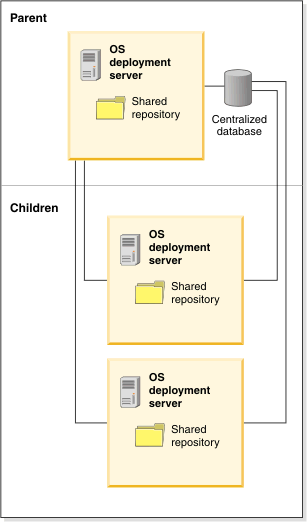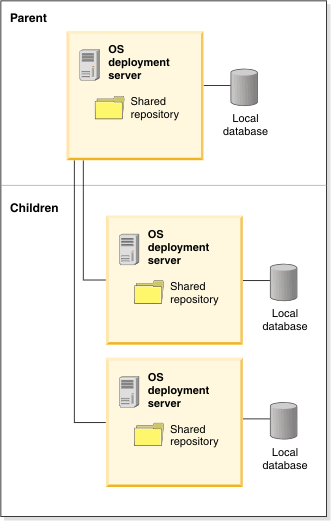When working with replicated OS deployment servers, Tivoli® Provisioning Manager for OS Deployment can use a single centralized database or multiple databases.
If you plan to have more than 10000 targets, the suggested multiserver configuration is with multiple databases.

The main prerequisite to use a single database is a good network connections between all your OS deployment servers and the database, as they need to connect on a regular basis. A single database does not require you to administer several databases located over the world, with the implied costs. However, you should certainly plan on a database backup because if your single database is down for whatever reason, none of your OS deployment servers is operational. An advantage of the single database infrastructure is the use of web interface to build the server hierarchy with a few simple clicks, to view all the servers in the hierarchy from any of its servers, and to perform all actions pertaining to the multiserver infrastructure.

Use multiple databases for your multiserver infrastructure if your network infrastructure does not allow you to have a single database, as each of your OS deployment servers can function more or less independently of one another and does not require constant connection to a distant database. For example, if one of the databases is down, the OS deployment servers linked to the other databases are not hindered at all and can perform their usual tasks. The drawbacks of a multiple database infrastructure is the need of a database server in each location you have an OS deployment server, the need to use a configuration file to setup the multiserver infrastructure, and the limited visibility of the OS deployment servers as you can only see the children in the hierarchy through the web interface of a given OS deployment server.